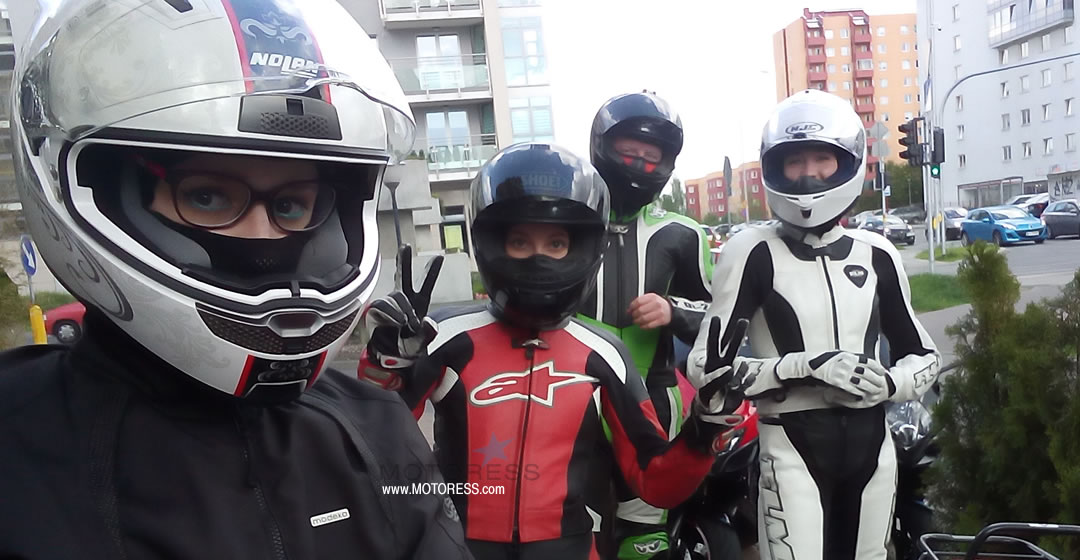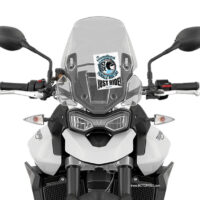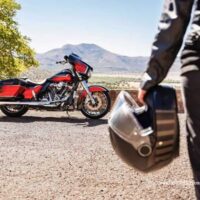Last Update: 10 February 2024

If you are going to meet up with others for your ride, use this personal International Female Ride Day COVID-19 Safety Ride Guide. While there are still many unknowns about Coronavirus spread, experts consider risks to be lower in outdoor settings – just the environment we motorcycle riders reside in! Here is where safe physical-distancing practices are in place.
Riding with another rider friend, or small group of two to three that you trust is likely safe, depending on the area you live in and the precautions you all take.
Overall, it is best to still do everything you can to lessen the spread of Coronavirus. Include physical distancing, frequent hand washing, keeping your helmet visor down when riding/speaking, and wearing a bandanna or mask if possible.
All decisions are individual, but it’s important to be aware of the spread of the virus and follow local health recommendations.
*Before making any decisions, check with local health guidelines.
FAQS
Where do things stand with COVID-19? While countries are slowly opening back up, that doesn’t mean we are out of the woods. Vaccines are rolling out, but new variants are also on the rise. There are still many unknowns about the spread and immunity. We’re not back to normal yet. Be safe.
Is it okay to ride with a friend? Riding outside is mostly okay with a close friend or riding buddy – someone in your riding “bubble” that you trust. Remember to spread out and avoid physical contact. Again, check your local health guidelines to see what the current risk is in your area before making this decision. Having conversations with your friends about how much exposure they may have had to Coronavirus or how much time they’ve spent in close proximity to others is important in gauging your risks.
It’s key to be able to trust that your riding buddies will stay home if they aren’t feeling well and that you do the same. Though there’s always risk of being exposed or asymptomatically spreading COVID-19, doing these things can help keep your risk low.
Though spread of Coronavirus is a risk any time you are in close proximity to others, when people are close together in confined spaces, that’s when the virus becomes very transmittable. If you’re outside with a few individuals in a region where the number of cases and community spread is low, and you follow basic social-distancing guidelines, risk of spread is lower. But you may want to avoid your usual roadside lunch and coffee stops in cramped cafes.
Before you consider riding with other rider friends, or small group, ask yourself:
- Are there any restrictions on activities or gatherings in my area?
- Is community spread low?
- Are coronavirus cases in my community increasing or decreasing?
- Am I feeling sick?
- Will those who I’m riding with stay home if they’re feeling sick?
- Are we riding in an area where we can spread out?
- Are we riding in an area where we won’t come in contact with others?
- Have I or my rider friends been in close proximity with others for an extended period of time, such as at a restaurant, an office, or club?
- Do I live with anyone who is immunocompromised?
Is it safe to ride in groups again? It is still best to ride by yourself or maybe with one to three trusted riding buddies. We all need to be thinking about ways we can reduce the spread of the virus.
If you decide that riding with a small group on IFRD is something you’re comfortable with, you’ll want to ensure that these few people have been properly careful over the past few months, same as if you’re riding with one other person. Additionally, your small group should ride somewhere you know you won’t come in close contact with large crowds or high numbers of others.
Being outside can help ease some of the risk of the virus spreading, and while we still don’t have a firm grasp on what distance apart you need to be, to stay safe, at least one bike length or 2 meters/six feet apart as recommended.
How big of a group should you ride with? Experts say riding with one to three other people at this stage is a best practise. The smaller the group, the better and you also need to consider where you will be riding to ensure that your group can stay away from others. It will be much harder to socially distance if you have a large group and are riding in a popular area for IFRD.
Are there any risks of riding in groups? While there has been some recent confusion about the spread of the virus, the WHO recently said that asymptomatic spread remains a concern. This means you may be able to spread the virus to others without knowing you have it, and others may be able to spread it to you.
Additionally, it’s still unknown when pre-symptomatic (the time before you start to show symptoms of the virus) spread can occur, so it’s best to continue physical-distancing practices, hand washing, and wearing a mask, bandanna and or keeping your helmet on with visor down.
Another unknown is exactly how much room you need to give between yourself and other riders, and how far the virus can carry due to airflow. So, while it’s best to give yourself at least the standard gap of 2-3 seconds following distance, it’s probably inevitable you’ll end up in another rider’s *slipstream, which is where having a full face helmet, or at least a helmet visor may be beneficial. And if not, be sure to wear a face mask, face covering / bandanna.
* A slipstream is a region behind a moving object in which a wake of fluid (typically air or water) is moving at velocities comparable to the moving object, relative to the ambient fluid through which the object is moving. The term slipstream also applies to the similar region adjacent to an object with a fluid moving around it. “Slipstreaming” or “drafting” works because of the relative motion of the fluid in the slipstream. *wikipedia
In an urban setting, you might not have the space to spread out as much as you would want to (or it might not be safe to do so). Smaller groups make more sense here, as you will have better control over the group. It will be easier to space out in rural settings.
Should you keep your helmet on or wear a mask? When riding, you yell through your helmet, sneeze, catch your breath, breathe heavily, and perspire. These are all ways that the droplets that carry the virus can spread, so you have to be careful. Try to be aware and continue distancing as well as wearing a covering or mask whenever necessary. And, especially if you’re riding at slower speeds downwind from another rider. Keeping your helmet visor down, wearing a face covering (bandanna) or mask and riding spread out are all smart things to do until we get this under control.
In general, during your ride, if you’re in a situation where you won’t be able to distance yourselves, wearing a mask to help protect others is recommended.
Follow logical guidelines: don’t high five, or hug, don’t let riders touch your bike handlebars or cargo. Don’t share water and avoid hanging around chatting in close proximity in one place if not masked or shielded.
If you live with someone who is immunocompromised, is it safe to ride in a group? Any time we go out for a ride in public, we not only put ourselves at risk, but we bring that risk home to the people we live with. If you live with someone who is immunocompromised (has a weakened immune system due to conditions such as cancer treatment, bone marrow or organ transplants, HIV, or taking certain medications), is of advanced age (65 or older), or is at higher risk for severe complications from infection, you should take that into account when making your decisions. It is safer to join in on IFRD and “just ride” solo until disease transmission is low in your community.
Are there any other risks to consider? Overall, try to avoid motorcycling on crowded routes or if you off-road, avoid busy trails. Use extra care when using an open public toilet —there could have been someone sneezing or coughing into their hands near you or on surfaces in the restroom. These surfaces may not have had a thorough cleaning after each use and have poor ventilation. (While it’s not exactly known how long droplets stay in one area, studies have found that the virus has higher odds of transmission in closed indoor spaces.)
Overall as temp’s heat up, carry your own water. And if you plan to be out for a long ride, pack your own lunch and snacks so you can avoid public restaurants etc.
And maybe plan that your IFRD ride doesn’t take more than tank of fuel. This way you’ll only need to visit that germ-filled fuel station once!
Be safe and enjoy the ride!
Additional information-sources:
- Is It Safe To Go For A Ride?
- Complete Coronavirus Guide For International Female Ride Day Event Hosts and Planners




